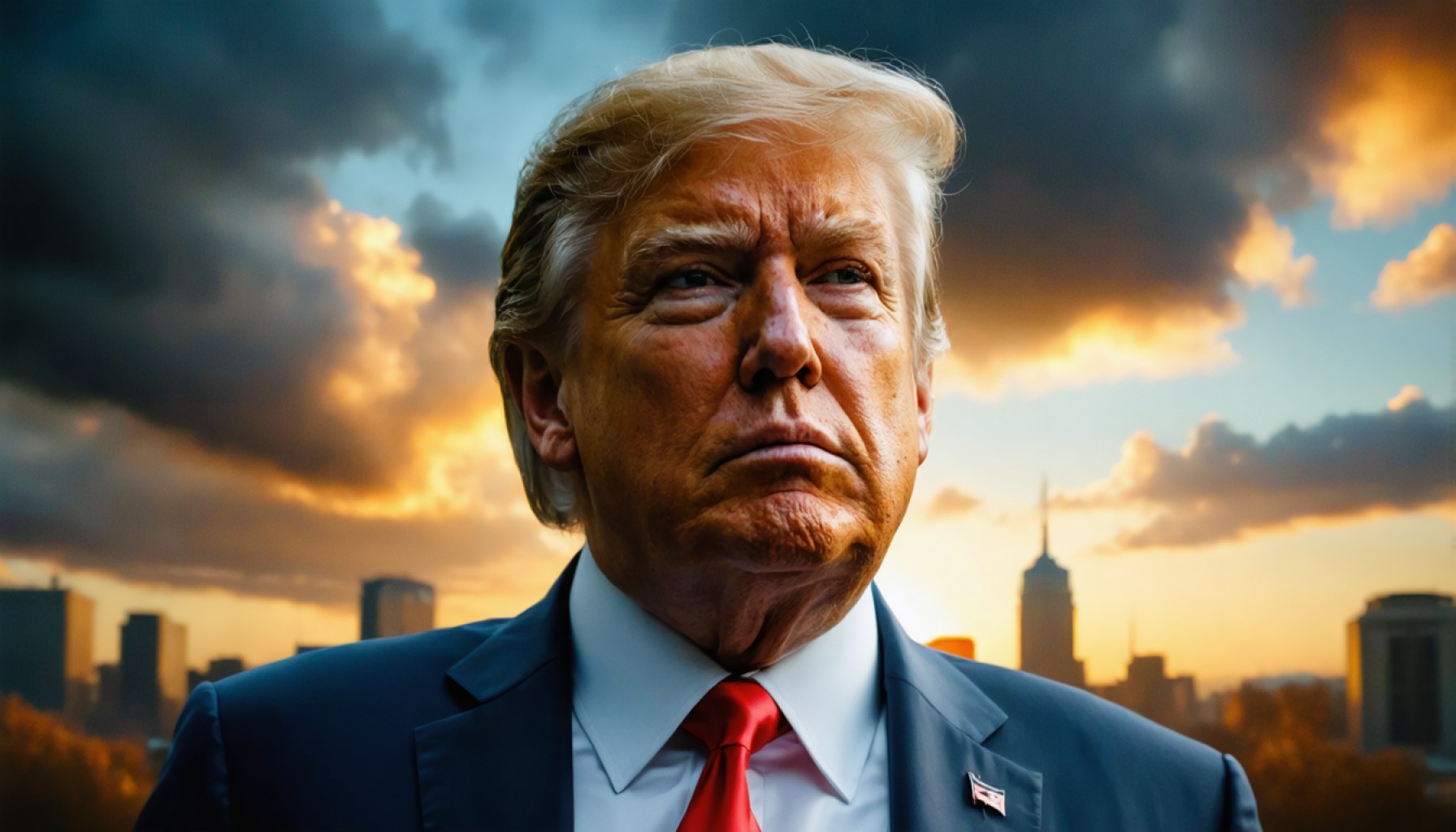
- President Trump’s aggressive actions against the federal judiciary create a constitutional crisis, challenging American democracy.
- Fueled by grievances, Trump targets the judiciary, claiming biased prosecution related to election results and classified documents.
- His actions and rhetoric could fracture constitutional democracy, akin to revolutionary defiance against monarchy.
- Threats against judges, law firms, and plans to use the Department of Justice politically raise alarms about governance integrity.
- The independent judiciary serves as the last line of defense against executive overreach, essential for American governance.
- Citizens must support the judiciary’s independence to ensure democracy’s survival and uphold foundational principles.
- The future of American democracy depends on whether the judiciary can resist political turmoil and maintain its independence.
The air crackles with tension as President Trump propels the nation into a constitutional crisis with his audacious war on the federal judiciary. Once the guardians of American justice, these courts now face an unprecedented barrage from Trump, who plunges deeper into discord with each executive maneuver.
Trump’s disdain for the judiciary is no revelation. Fueled by perceived grievances from his first term, he paints the justice system as a battleground, where he intends to take no prisoners. His indignation stems from what he sees as a biased prosecution against him—over attempts to reverse the 2020 election results and mishandling classified documents post-presidency.
Having evaded conviction by securing a second term, Trump sees himself emboldened, yet his actions risk leaving a legacy of chaos. Each day, he accelerates towards a point of no return, jeopardizing what little honeymoon period remains in his presidency. His bold declarations and actions could fracture the very foundations of constitutional democracy that the Founding Fathers constructed in opposition to monarchy, igniting echoes of a revolutionary past.
The list of his transgressions grows: harsh verbal attacks on judges, ominous threats lingering in their wake, and incendiary calls for their impeachment. His ire does not discriminate; it targets law firms and attorneys daring to represent his foes. More troubling still are his vows to repurpose the Department of Justice into a tool against adversaries, all while defying judicial decrees.
This crisis is no abstract debate. It challenges the bedrock of American governance: the independent judiciary. Despite Republican control of Congress and the relentless support from party loyalists, the courts stand as the last bulwark against executive overreach. It is this independence, as Hamilton articulated, that remains “essential” to the constitution. When that independence is besieged, the very essence of American democracy is at stake.
In an environment where checks and balances are crucial, Trump’s relentless pursuit of power threatens to undermine the judicial fabric. As citizens navigating these turbulent times, we must uphold the judiciary’s independence. Only then can democracy endure, preserving a nation for future generations.
The message is clear: a nation without a steadfast judiciary is a threat not just to its people, but to the principles upon which it was founded. The question remains—will the judiciary withstand the storm, or will the chaos of current politics rewrite America’s future? The stakes have never been higher.
The High-Stakes Clash: Trump vs. the Judiciary—What’s Next for American Democracy?
Understanding the Present Crisis
The unfolding clash between former President Donald Trump and the U.S. federal judiciary represents a pivotal moment in American political history. Trump’s aggressive stance toward the judiciary raises urgent questions about the resilience of democratic institutions and the rule of law. As the situation intensifies, several dimensions require in-depth exploration to better understand the crisis’s implications and potential outcomes.
Historical Context and Recent Developments
The tension between the executive branch and the judiciary is not new, but Trump’s actions have markedly amplified the issue. Historical instances of executive-judiciary conflict include President Franklin D. Roosevelt’s court-packing plan in the 1930s and the numerous times presidents have challenged judicial decisions. However, Trump’s strategy appears unprecedented in its open verbal assaults and implied threats.
1. Historical Parallel: The Judicial Procedures Reform Bill of 1937, commonly referred to as FDR’s court-packing plan, was a direct attempt to influence the Supreme Court’s decisions by expanding its size. This met with significant opposition and was ultimately unsuccessful. Similarly, Trump’s rhetoric may lead to legislative or public actions aimed at preserving judicial independence.
2. Impact of Judicial Appointments: During his presidency, Trump appointed over 200 federal judges, including three Supreme Court justices. These appointments may influence decisions favorably towards executive actions, yet many judges have historically demonstrated independent decision-making despite political expectations.
Legal, Political, and Social Implications
1. Constitutional Crisis Indicators: According to experts, a constitutional crisis involves severe challenges to the established way of governance, particularly when institutions fail to uphold constitutional norms. Trump’s actions might be pushing the nation towards such a crisis if perceived as attempts to undermine judicial review.
2. Democratic Stability: Political analysts warn that persistent attacks on the judiciary could weaken overall democratic resilience. Judicial independence is a cornerstone of democracy, ensuring checks and balances crucial for preventing authoritarianism.
3. Public Perception and Trust: Public trust in the judiciary is paramount for maintaining societal order. Pew Research Center findings indicate fluctuating levels of confidence in the courts, often influenced by political affiliation and leadership rhetoric.
Potential Outcomes and Actionable Steps
1. Judiciary’s Resilience: The judiciary’s response to these attacks—whether through reaffirming its autonomy or succumbing to political pressure—will be decisive. Historical tendencies suggest judges prioritize legal precedents and constitutional mandates over executive preferences.
2. Civic Engagement: Citizens can play a crucial role by demanding accountability and transparency from elected officials. Engaging in informed dialogue and participating in advocacy are vital measures to support judicial independence.
3. Policy Recommendations: Legislators must consider laws that reinforce the separation of powers and protect the judiciary from overt political influence. Introduced reforms should aim at refining judicial appointment processes to minimize political bias.
Final Thoughts
The ongoing confrontation has high stakes for American political stability and democratic processes. Key to navigating this period is maintaining a vigilant, active citizenry and a robust, independent judiciary. Only through collective efforts can democracy be preserved and upheld for future generations.
For further insights and updates on the situation, you may explore resources on New York Times or BBC News for comprehensive coverage and expert analyses.
By staying informed and engaged, citizens can contribute significantly to safeguarding the principles of justice and democracy during these tumultuous times.



